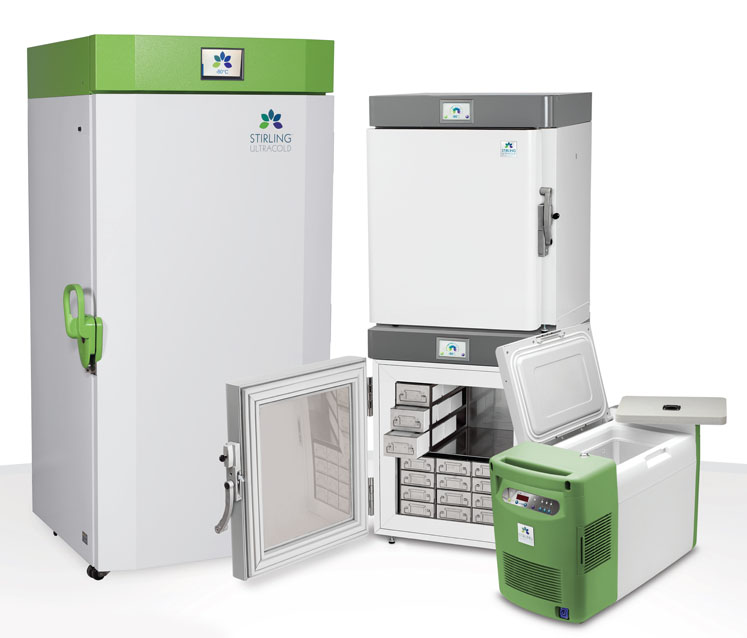KSR: The pharmaceutical supply chain is undoubtedly a hot topic of conversation at the moment but, when it comes to a COVID vaccine, is it actually fit for purpose?
RG: That’s an incredibly difficult question to answer because it depends on the particular vaccine. If you take an extreme viewpoint then, no it isn’t, because the vaccine supply chain isn’t really equipped for storage at –80 °C or below. For a more conventional vaccine, then yes.
We also have to consider the volume that needs to be transported. The closest comparison we have is probably the annual flu vaccines, but we’re still talking almost an order of magnitude greater than we would do in a shorter period of time than flu.
As such, the short answer is no … but how could it be? This is a global pandemic the likes of which we’ve never seen in our lifetime, so I don’t think we’re in a particularly good place. There is a lot of potential, though, and a lot being done — quite effectively — to overcome the hurdles that the pharmaceutical industry is currently facing.
I understand that Dusty is very concerned about and focusing on what’s known as the “last mile,” which is an incredible tough challenge to overcome as we go forward. Clinics and pharmacies, for example, may well be equipped to deliver flu vaccines, but not to deliver medicines that need to be stored at –80 °C.
DT: I completely agree. Up until now, the emphasis, when you break it down, has been on developers and manufacturers [of vaccines]. They’re generally well funded, have infrastructure in place and are used to dealing with ultra-low temperature requirements.

Robin Grimwood
The next part of the process, however, is working out how we safely and effectively distribute a potentially labile product at a scale way beyond what most pharmaceutical companies have achieved in the past.
Given the order of magnitude and the scale that Robin articulated, a key point here is the fact that we absolutely need distribution hubs or “freezer farms” to ensure that the appropriate infrastructure is put in place. The good news is that many governments are actually doing this, which is fantastic.
But the real challenge, to be quite honest, isn’t located there; it’s the ability to take the vaccine out of the freezer farm and get it to the clinics and the pharmacies.
And then you have to delve a little deeper, beyond the towns and cities to more remote areas and think about the dynamics associated with reaching those locations. Most people have never been in a situation wherein they’ve had to deal with ultra-low cold temperatures.
Sure, they’ve done refrigeration — say +4 to –20 °C — but when we start to talk about vaccine candidates that require temperatures of –20 to –80 to remain stable and efficacious at the administration point, very few of these respective entities have any real experience. And that’s where the challenge lies. And then you need to look at developed versus undeveloped regions, etc., and the magnitude of what needs to be done becomes increasingly onerous!
KSR: Having experienced MERS and SARS, was the pharmaceutical industry adequately prepared to cope with a global epidemic that requires solutions to the issues you’ve just described?
DT: The biggest dilemma in terms of what we’re talking about is that the world has operated a stability testing regime that’s done before the vaccines are actually released. Only when that’s completed can lower temperatures be applied.
What’s happening now is a confluence of facets associated with a race, which means speed, and that means reducing the amount of work that we normally do to get a vaccine out and available to the broader population.
And when you do that, you’re basically skipping a step or two, maybe even three, such as stability testing. By doing so, what’s now required — even with the advent of personalised medicine biologics — is effective ultra-cold freezing.

So, was Big Pharma ill prepared? No. What’s happened is a by-product of the fact that this race, this speed element and the inability to run normal stability tests, is subsequently impacting how pharmacies, clinics and regional health centres are thinking about the infrastructure they’re going to need to ultimately administer a vaccine.
It’s a fundamental change in dynamics. Everyone’s familiar with the flu vaccine and the system that’s in place to determine what the end product is going to look like … unlike the current situation in terms of actually addressing the COVID-19 virus and creating something from scratch in the shortest timeframe possible.
RG: I’d like to echo that. I think the industry has responded very quickly. The last time I checked, there were 51 vaccine candidates in the pipeline at varying stages of development … and the interesting question is going to be which one will come through first.
You simply can’t be ready to manufacture, store and distribute a vaccine if you don’t know which vaccine candidates will be approved and what that entails. Whether the vaccine comprises an inactivated virus, a viral vector or a protein, whether it’s going to be mRNA-based, recombinant or an adenovirus can’t be guessed!
There are so many different options that it’s hard to be prepared in advance. So, our industry has got to be agile and prepared to flex appropriately. Once we know the storage conditions, we can accommodate it … and that’s why I think Stirling’s technology is uniquely positioned to offer that capability.

Dusty Tenney
DT: The only thing I’d like to add to that is that I think there’s going to be multiple vaccines. When you look at the candidates making their way through the various different clinical trials, you see another dynamic being created. Pfizer is specifying a requirement for –80 °C, whereas Moderna is citing –20 °C.
Plus, as Robin just noted, you have a whole range of other players out there that are contemplating a variety of stability temperatures. The pharmaceutical supply chain, therefore, must be prepared to accommodate one and all of those ultra-low cold needs because it’s highly likely that multiple vaccine candidates are going to be released from different sources.
RG: Another challenge that we have in terms of storing COVID-19 vaccines for New York Presbyterian Hospital is that they need to be prepared, but they don’t know which vaccines to be prepared for! And this goes beyond temperature, it relates to the vial size, the container, etc., and how it’s going to be distributed.
Typically, when you equip a freezer, you get it ready for the incoming container to maximise its storage capacity. In this case, however, we can be as flexible as we can, but we can’t predict the future.
So, while we wait for the final specifications, we have to incorporate excess storage capacity and wait until the last possible moment to optimise the racking etc., get the freezers in place, validated and ready as early as possible. By doing so, once the vaccines are made and identified, we can be ready to go at the drop of a hat.
KSR: Talking about flexibility, the normally conservative pharmaceutical industry is actually responding to the pandemic with amazing speed and agility. Is there, perhaps, something positive that might come out of all this?
RG: I think so. Obviously, the coronavirus has affected all of us. So, there are the normal commercial burdens on pharmaceutical companies … and there are the added pressures that everyone else is applying. That is, we all want a solution.
Given that we’re all in this together and everyone in the industry is focused on the same goal, it does mean that, on the whole, we’re experiencing higher levels of collaboration, teamwork and agility, from research and development right through to commerce, business partnerships and future innovation. The outlook post-COVID is very positive.




